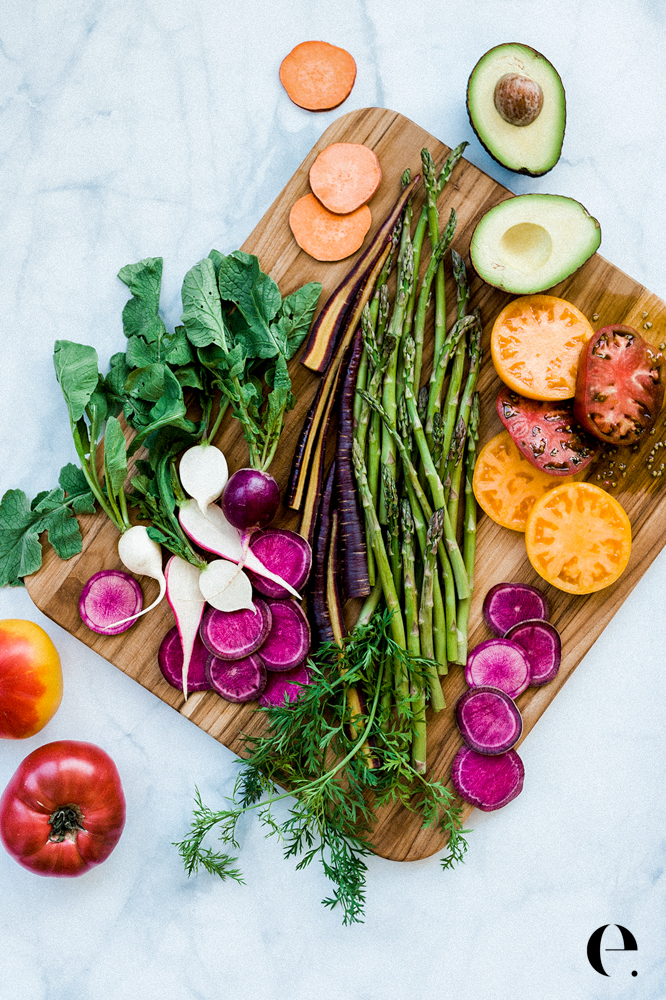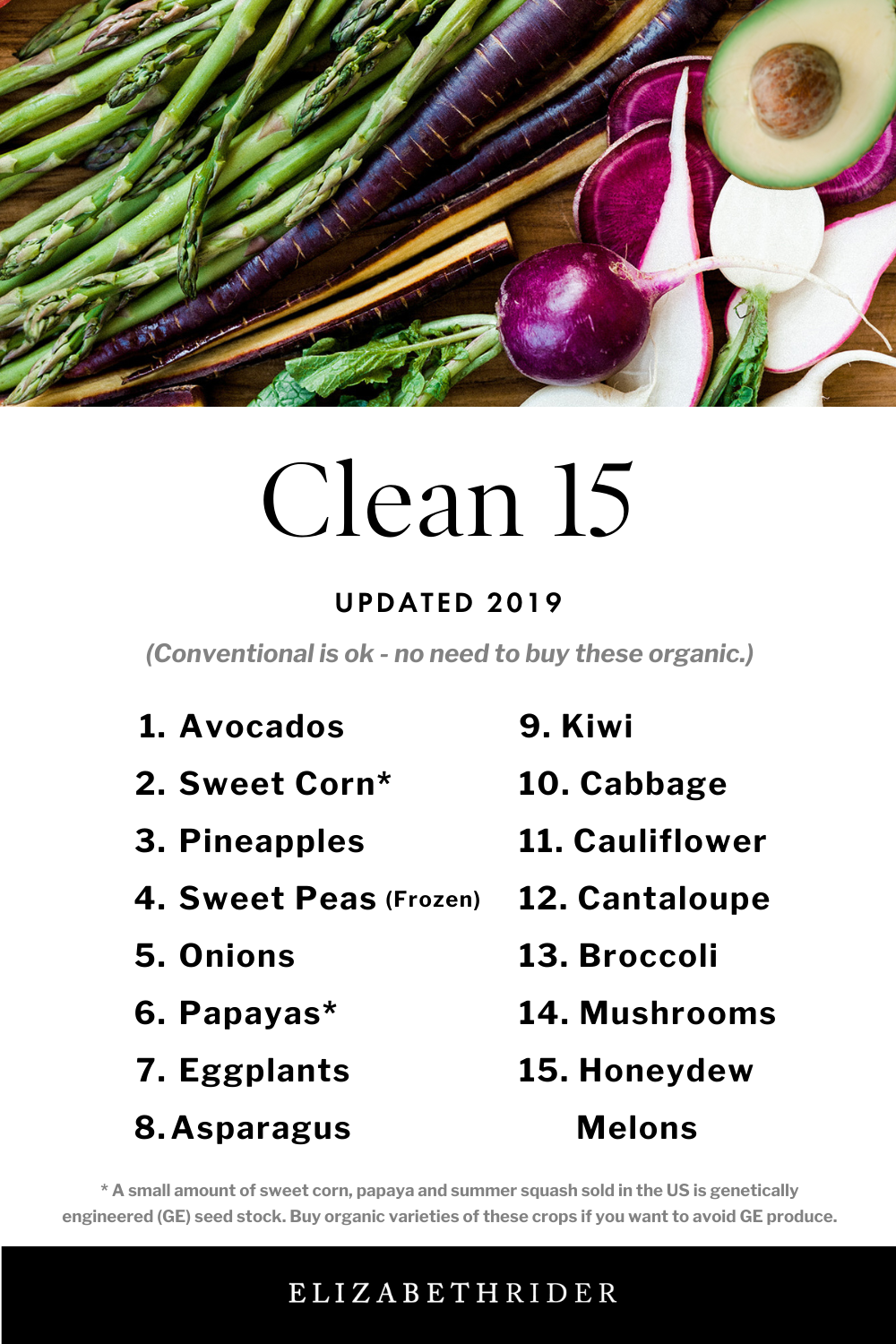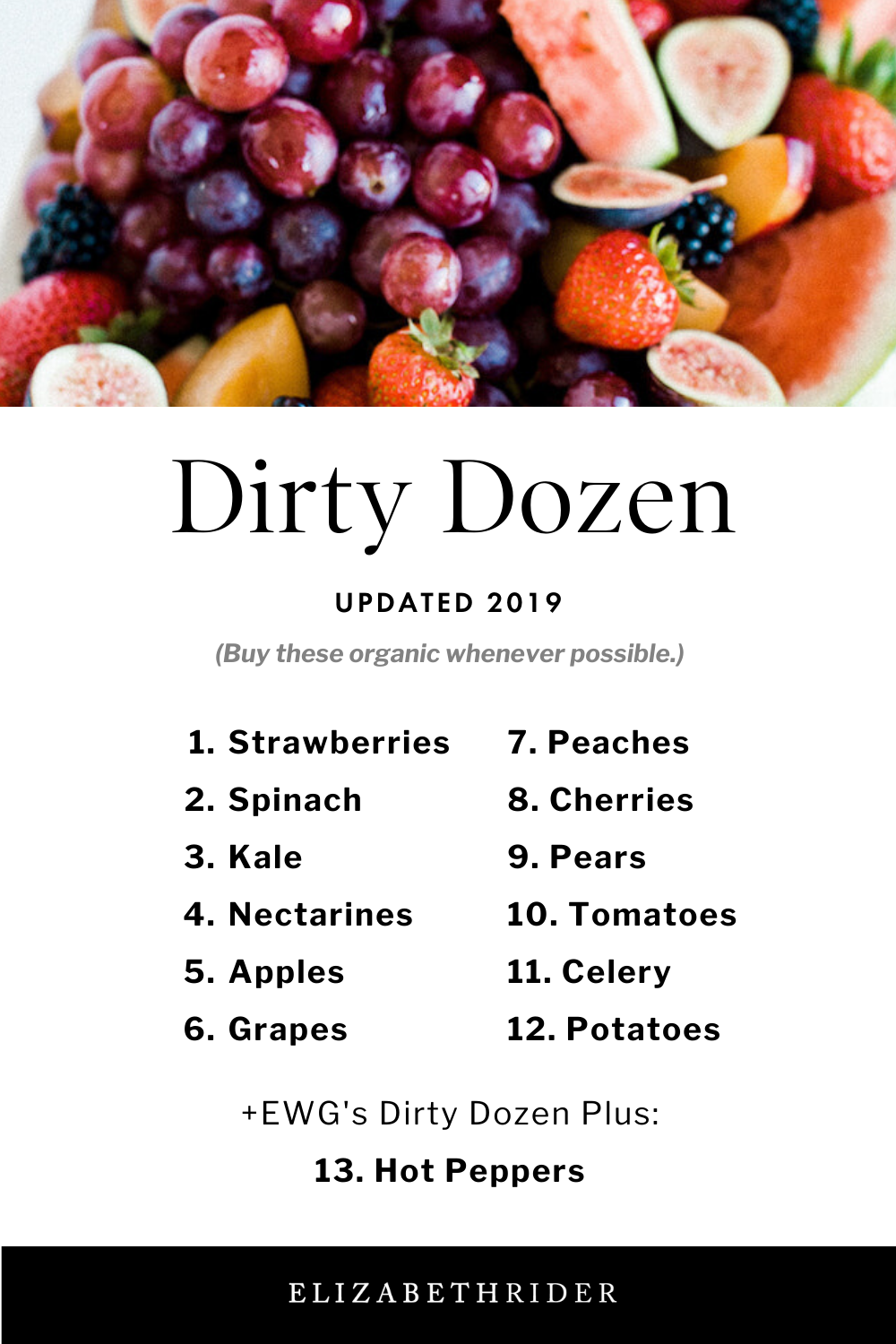Hey friend! I just updated this post with downloadable images of the new Dirty Dozen and Clean 15 (below) so you can have these lists handy on your phone or device while shopping. Ill update them every year so you can come back and grab them. Right-click (or control+click) or hold and tap the image to save to your device.

People often ask me if I always buy everything organic, but Ill be the first to tell you that health coaches definitely arent always perfect!
While I try my best to do mostly organic, its just about impossible to only eat foods labeled organic.
Plus, when it comes to produce, organic isnt always necessary.
What really matters is how the food was grown. Some smaller farms use all organic practices but havent gone through the full organic certification process yet because it can be expensive for asmall business. Get to know your local farms and stands and the farmers market and ask about the farms practices.
Youmay haveheard of the Dirty Dozen and Clean 15, but you might not know that the lists are updated each year.
When shopping at traditional grocery stores, I use the Dirty Dozen and Clean 15 lists to choose what produce Ill buy organic.
Check out the full lists below, and save the handy images I made you to your phone for easy shopping.
The Environmental Working Group (EWG) is a non-profit, non-partisan organization dedicated to protecting human health and the environment. They research whats in our tap water, the safety of our cosmetics, genetically modified organisms (GMO / GE), and the amounts of pesticides in and on our food, among other things.
The EWGs Shoppers Guide to Pesticides in Produce (aka Dirty Dozen and Clean 15) is updated each year and ranks pesticide contamination on 48 popular fruits and vegetables. The guide is based on results of more than 35,200 samples tested by the U.S. Department of Agriculture and the Food and Drug Administration.
(aka Dirty Dozen and Clean 15) is updated each year and ranks pesticide contamination on 48 popular fruits and vegetables. The guide is based on results of more than 35,200 samples tested by the U.S. Department of Agriculture and the Food and Drug Administration.
The top 15 foods with the least pesticides are called the Clean 15, while the 12 foods with the most pesticides are called the Dirty Dozen. These lists are fantastic to take with you on your shopping trips to know when to buy organic and when its ok to buy conventional.
And lucky for us, avocados are at the top of the clean list!
The Dirty Dozen (2019)
Buy these organic whenever possible Updated 2019
- Strawberries
- Spinach
- Kale
- Nectarines
- Apples
- Grapes
- Peaches
- Cherries
- Pears
- Tomatoes
- Celery
- Potatoes
+EWGs Dirty Dozen Plus: - Hot Peppers
Here is an image to save to your phone for easy shopping (right-click or hold and tap to save as):
The Clean 15 (2019)
These are ok to buy conventional (not organic) Updated 2019
- Avocados
- Sweet Corn*
- Pineapples
- Sweet Peas (Frozen)
- Onions
- Papayas*
- Eggplants
- Asparagus
- Kiwi
- Cabbage
- Cauliflower
- Cantaloupe
- Broccoli
- Mushrooms
- Honeydew Melons
* Per the EWG, a small amount of sweet corn, papaya and summer squash sold in the United States is produced from Genetically Engineered (GE) seed stock. Buy organic varieties of these crops if you want to avoid Genetically Engineered produce. I personally buy these organic.
Here is an image to save to your phone for easy shopping (right-click or hold and tap to save as):

You can read and downloadthe full EWG report and lists here. Below are the highlights of the key findings:
2019 Dirty Dozen & Clean 15 Key Findings Summary
- Avocados and sweet corn were the cleanest. Less than 1 percent of samples showed any detectable pesticides.
- More than 70 percent of Clean Fifteen fruit and vegetable samples had no pesticide residues.
- With the exception of cabbage, all other produce on the Clean Fifteen tested positive for less than four pesticides.
- Multiple pesticide residues are extremely rare on Clean Fifteen vegetables. Only 6 percent of Clean Fifteen fruit and vegetable samples had two or more pesticides.
If you read the full EWG report of all the foods youll notice that a few common foods like bananas and carrots fall somewhere in the middle. I typically buy organic for these types of foods. If something seems abnormally high in price, I might just substitute it with something thats in season and a lower price; for instance, fresh organic blueberries will be very expensive in November, whereas fresh organic apples will be a better price because theyre a fall food. Always just do the best you can when it comes to the quality of your food; Im a firm believer that fresh produce is always better than no produce.

Keep in mind, washing produce doesnt necessarily get rid of all pesticides and chemicals as it grows into the entire plant, but it can reduce your risk and exposure so be sure to always wash everything thoroughly. High costs are also a reason that I love frozen fruits and veggiesthey end to be a better price and keep for months in the refrigerator. I almost always have frozen organic blueberries from Costco in my freezer for smoothies and other treats.
I suggest keeping these lists on your phone or printing them off to take to the store with you. I have them saved in a note on the Notes app on my iPhone for quick and easy access.
Happy Shopping!
The post Updated Dirty Dozen & Clean 15 appeared first on Elizabeth Rider - Health Coach, Author, TV Host & Wellness Expert.

